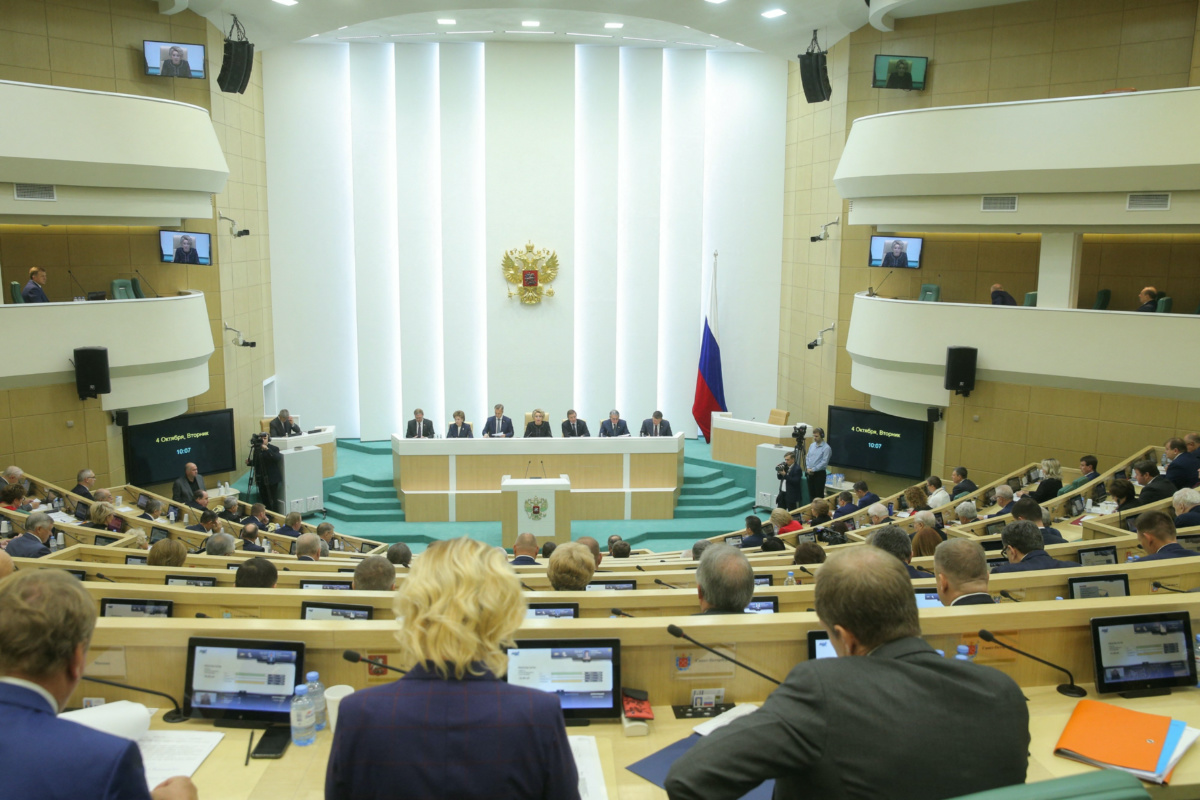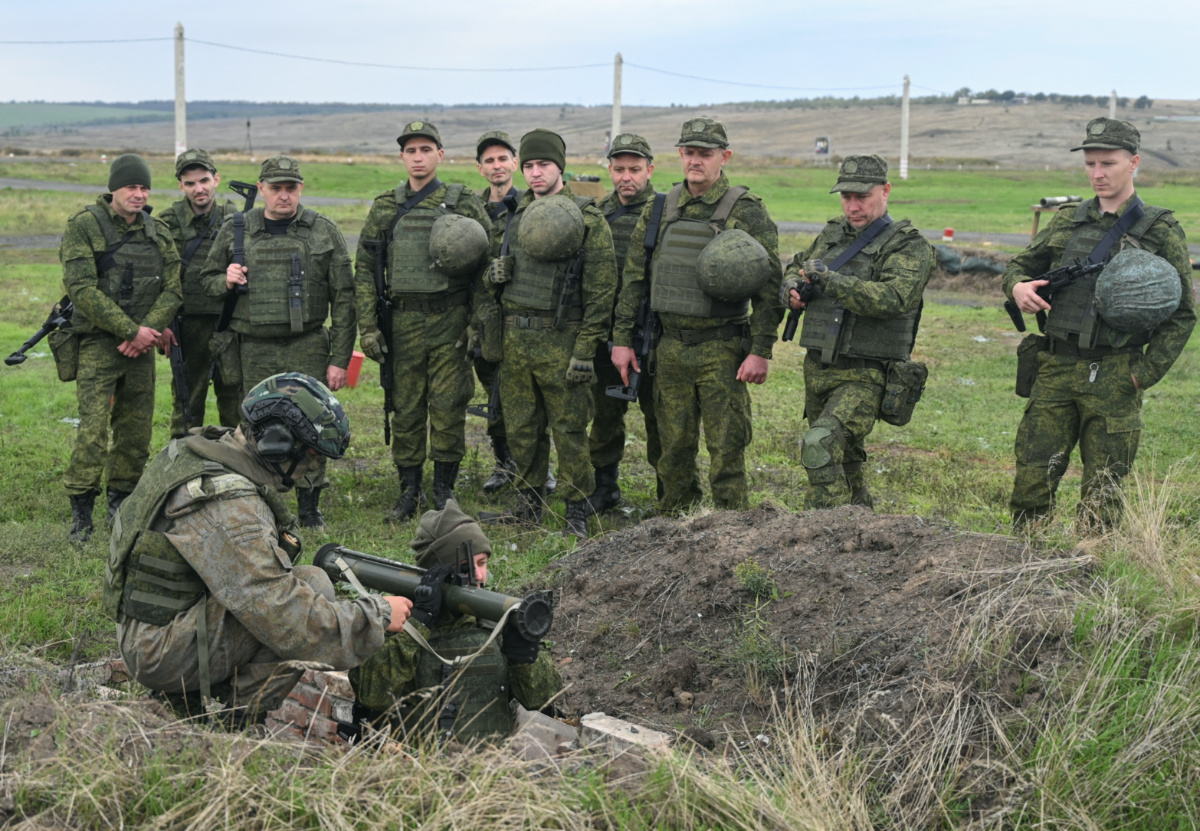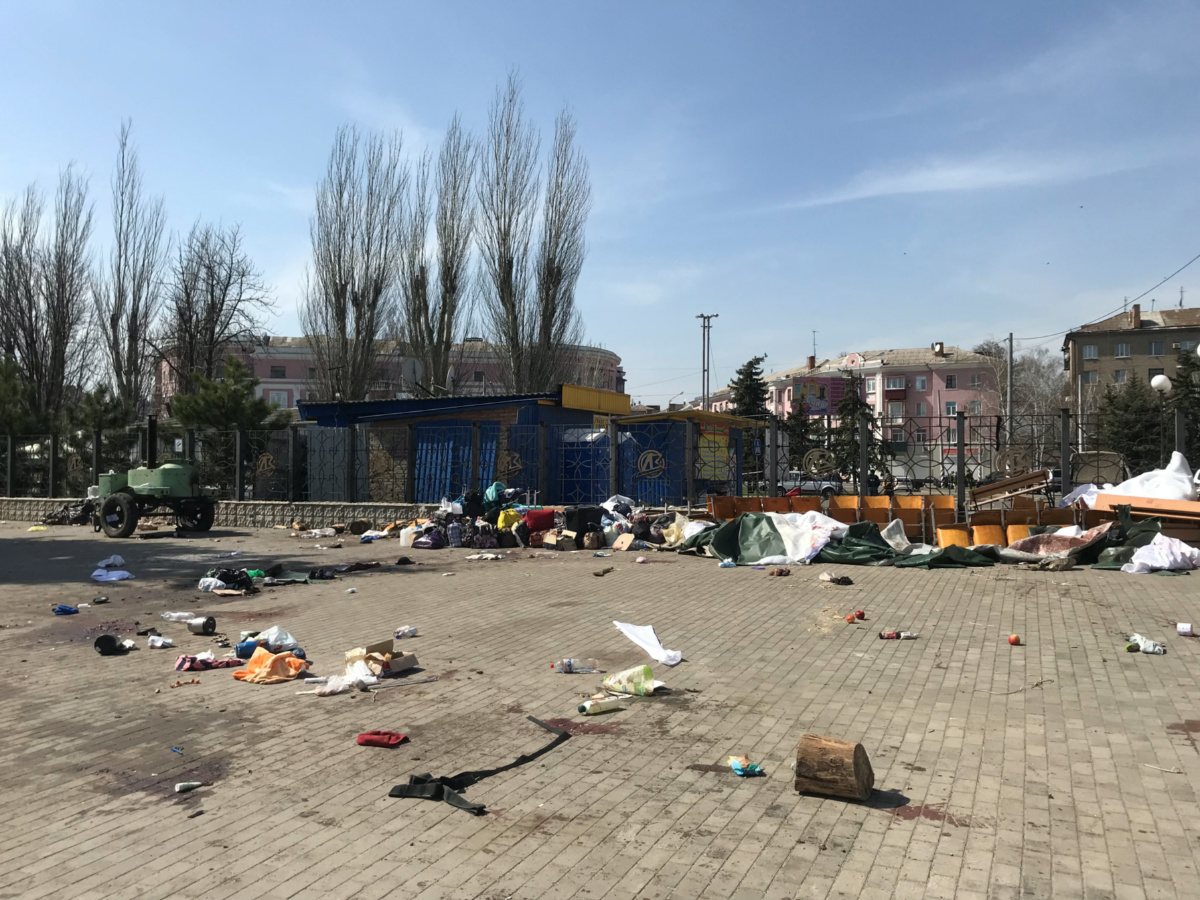Kramatorsk/Kyiv, Ukraine
Reuters
Russian President Vladimir Putin looked set to finalise his plan to annex four Ukrainian regions on Tuesday even as Ukraine pushed back his forces on two separate battlefield fronts, reducing the amount of seized territory Moscow controls.
Russia has escalated its seven-month war with the annexation drive, a military mobilisation and warnings of a possible recourse to nuclear weapons to protect all of its territory.

Members of the Russia’s Federation Council, the upper house of parliament, attend a session to ratify legislation on annexing Ukraine’s Donetsk, Kherson, Luhansk and Zaporizhzhia regions into Russia, in Moscow, Russia, on 4th October. PICTURE: Russian Federation Council/Handout via Reuters
Putin was expected to sign on Tuesday evening a law formally incorporating the four regions, representing about 18 per cent of Ukraine’s territory, into Russia, a move Kyiv and its Western allies say is illegal and will not be recognised.
The two chambers of Russia’s parliament have already ratified the legislation.
Russia does not fully control any of the four regions it claims – Donetsk and Luhansk in eastern Ukraine and Zaporizhzhia and Kherson in the south – and the Kremlin has said it has yet to determine the final borders of the annexed territory.
Russian forces in the Donetsk and Kherson regions have been forced to retreat in recent days and appear to be struggling to halt an increasingly Western-equipped Ukrainian army.
US President Joe Biden told Ukraine’s leader Volodymyr Zelenskiy in a call on Tuesday that Washington would provide Kyiv with $US625 million in new security assistance, including High Mobility Artillery Rocket System (HIMARS) launchers.
Biden also reiterated that the United States would “never recognise” Russia’s annexation of Ukrainian territory, the White House said.
Earlier, the European Union also rejected Moscow’s “illegal annexation” and urged it to unconditionally withdraw all of its troops from the entire territory of Ukraine.
Separately, Italy’s likely next prime minister, Giorgia Meloni, offered Ukraine “her full support” during a phone call with Zelenskiy, her Brothers of Italy party said. Two of her allies, who have ties to Putin, have been much more ambivalent.
Moscow hopes a “partial mobilisation” it announced two weeks ago can help reverse a series of battlefield reversals.
Defence Minister Sergei Shoigu was cited by the RIA news agency on Tuesday as saying that Russia had so far called up more than 200,000 reservists out of a planned 300,000 men.
Many Russian men have fled the country rather than fight in Ukraine, however, and Russian lawyers say they are working flat out to offer advice to men who want to avoid being drafted. Some Russians are making journeys of thousands of miles by car, train and plane to escape.

Newly-mobilised reservists take part in a training on a range in Rostov region, Russia, on 4th October. PICTURE: Reuters/Sergey Pivovarov
Southern breakthrough
President Alexander Lukashenko of Belarus, Ukraine’s northern neighbour and an ally of Putin, accused Kyiv on Tuesday of sending 15,000 troops to the border area to build defences and conduct reconnaissance, actions he called “provocations”.
In their biggest breakthrough in the south since the war began on 24th February, Ukrainian forces retook several villages in an advance along the strategic Dnipro River on Monday, Ukrainian officials and a Russian-installed leader in the area said.
Ukrainian forces in the south destroyed 31 Russian tanks and one multiple rocket launcher, the military’s southern operational command said in an overnight update.
Ukrainian video footage from Novopetrivka, a newly recaptured village in the Kherson region, showed Ukrainian soldiers removing a Russian flag from a power pylon, wiping their feet on it and setting it alight. They then raised a Ukrainian flag.
In the east, Ukrainian forces have been expanding an offensive after capturing the main Russian bastion in the north of Donetsk, the town of Lyman, hours after Putin proclaimed the annexation of the province last week.
We rely on our readers to fund Sight's work - become a financial supporter today!
For more information, head to our Subscriber's page.
Russian defence ministry maps presented on Tuesday appeared to show rapid withdrawals of Russian invasion forces from areas in eastern and southern Ukraine where they have been under severe pressure from the Ukrainian counteroffensive.
The ministry’s daily video briefing made no mention of any pullbacks, but on maps used to show the location of purported Russian strikes, the shaded area designating Russian military control was much smaller than the day before.
Ukraine has released little information about Kherson, in keeping with a policy of withholding details about ongoing advances. Zelenskiy said in his nightly video address that Ukraine’s army had seized back towns in a number of areas, without giving details.
On the eastern front, Denis Pushilin, the Russia-backed leader in Donetsk, said Russian forces were building a serious line of defence around the city of Kreminna after being pushed back.
In the early hours of Tuesday morning, a Russian missile crashed into the outskirts of the Ukraine-controlled eastern city of Kramatorsk. A Reuters reporter on the scene said the missile had gouged a huge crater in the backyard of a house.

Vladimir Reuka takes belongings out from his son’s house following a Russian missile strike, as Russia’s attack on Ukraine continues, in Kramatorsk, Donetsk region, Ukraine, on 4th October. PICTURE: Reuters/Zohra Bensemra
“Nuclear rhetoric”
In a decree on Tuesday, Zelenskiy formally declared any talks with Putin “impossible”, while leaving the door open to talks with Moscow if it got a new leader.
The Kremlin said that what it calls its “special military operation” in Ukraine would not end if Kyiv ruled out talks, adding that it “takes two sides to negotiate”.
Kremlin spokesman Dmitry Peskov also said Moscow did not want to take part in “nuclear rhetoric” spread by the West, after Britain’s Times newspaper reported that NATO had warned members Putin might test an atomic weapon on Ukraine’s border.
A Western diplomat told Reuters on Tuesday NATO had not warned its members of a Russian nuclear threat. Separately, a NATO official said the alliance had not observed any changes in Russia’s nuclear posture but that NATO remained vigilant.
The Kremlin welcomed a potential peace plan floated on Twitter by billionaire Elon Musk, whereby Ukraine would cede Crimea, allow new referendums on Russian-occupied land and agree to neutrality.
“It is very positive that somebody like Elon Musk is looking for a peaceful way out of this situation,” said Peskov of the plan, which was denounced by Kyiv as an effective reward for Moscow’s invasion.
– With reporting by Reuters bureaux






